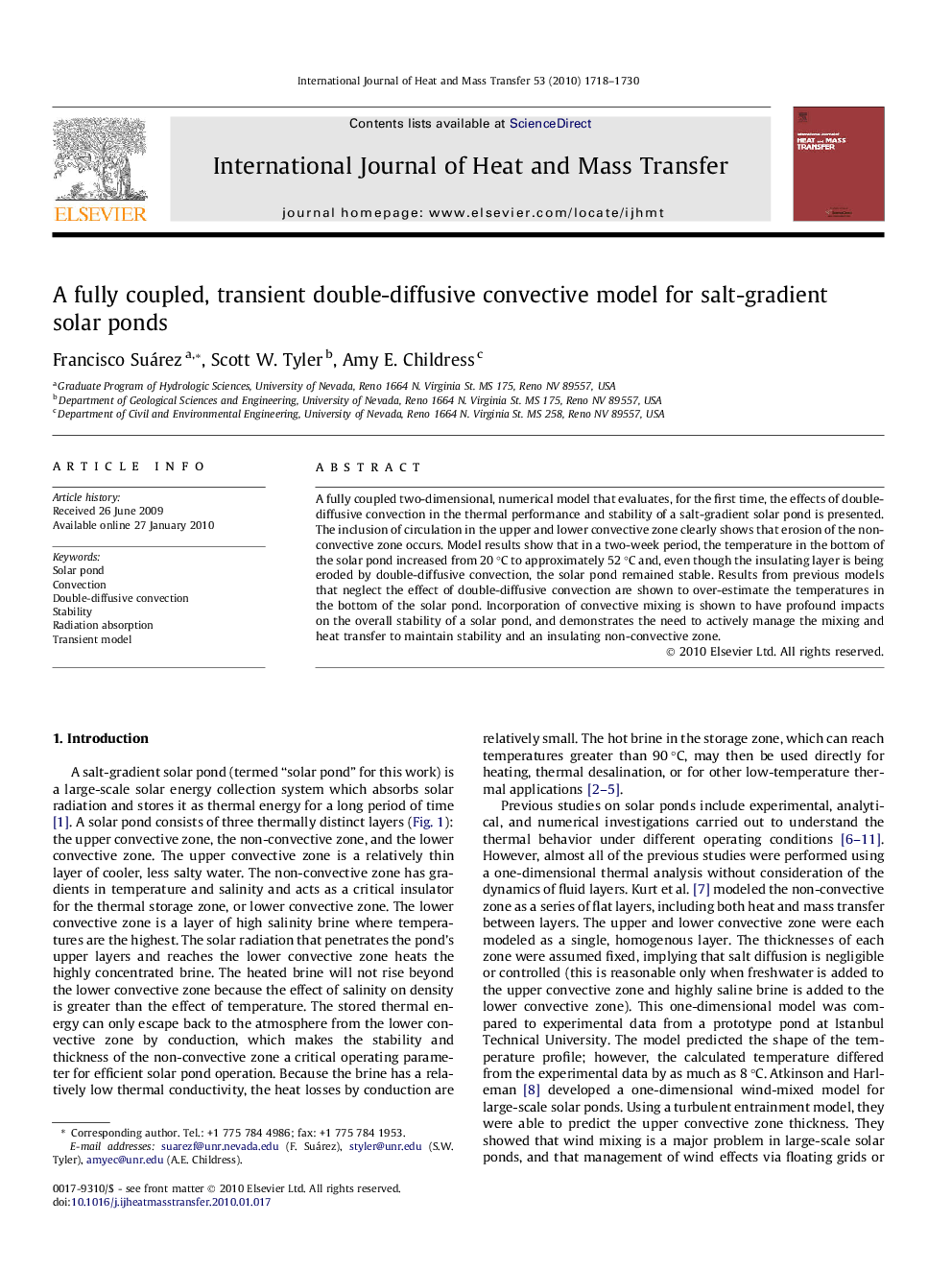| Article ID | Journal | Published Year | Pages | File Type |
|---|---|---|---|---|
| 660135 | International Journal of Heat and Mass Transfer | 2010 | 13 Pages |
A fully coupled two-dimensional, numerical model that evaluates, for the first time, the effects of double-diffusive convection in the thermal performance and stability of a salt-gradient solar pond is presented. The inclusion of circulation in the upper and lower convective zone clearly shows that erosion of the non-convective zone occurs. Model results show that in a two-week period, the temperature in the bottom of the solar pond increased from 20 °C to approximately 52 °C and, even though the insulating layer is being eroded by double-diffusive convection, the solar pond remained stable. Results from previous models that neglect the effect of double-diffusive convection are shown to over-estimate the temperatures in the bottom of the solar pond. Incorporation of convective mixing is shown to have profound impacts on the overall stability of a solar pond, and demonstrates the need to actively manage the mixing and heat transfer to maintain stability and an insulating non-convective zone.
